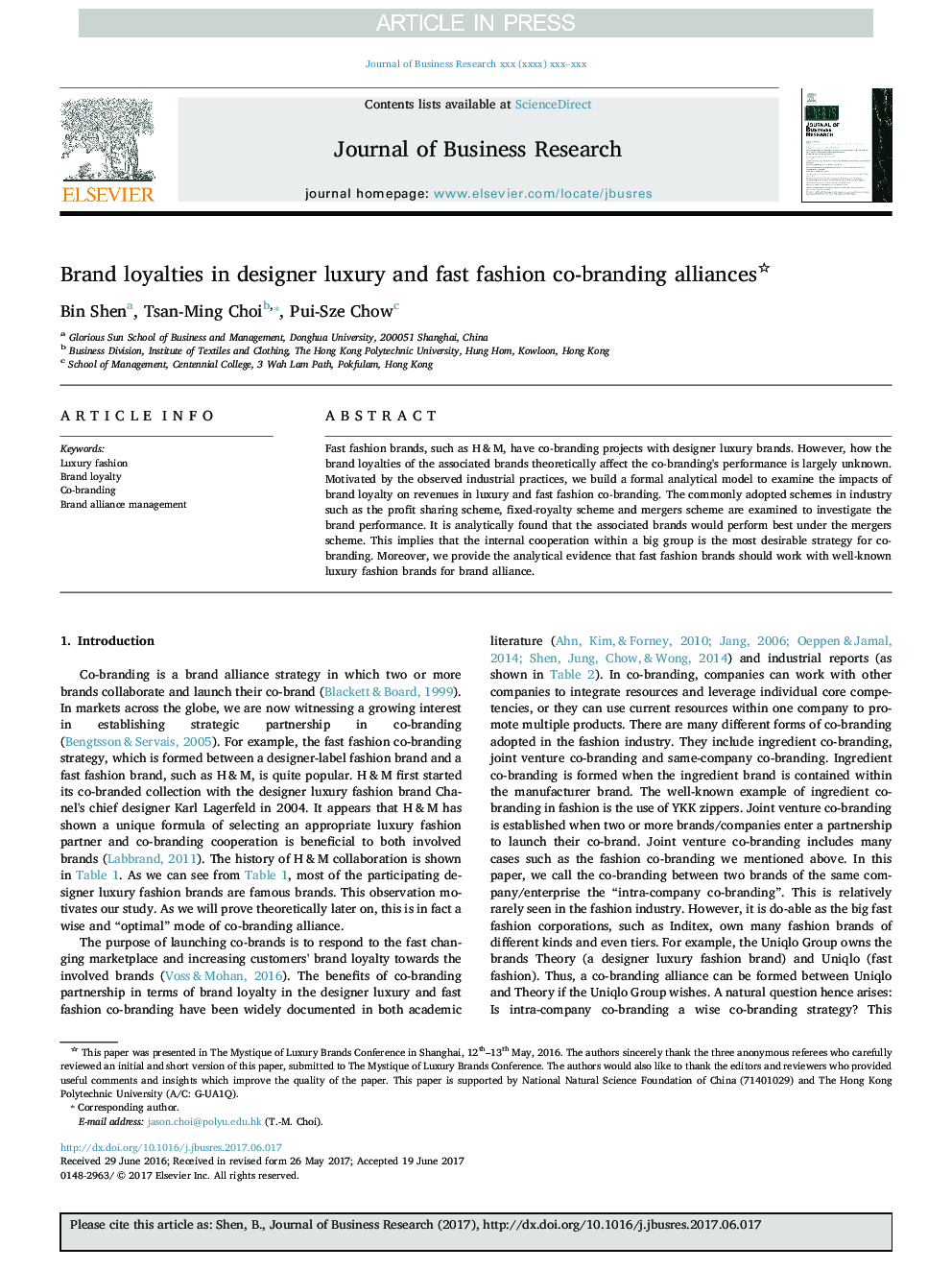| Article ID | Journal | Published Year | Pages | File Type |
|---|---|---|---|---|
| 5109377 | Journal of Business Research | 2017 | 8 Pages |
Abstract
Fast fashion brands, such as H&M, have co-branding projects with designer luxury brands. However, how the brand loyalties of the associated brands theoretically affect the co-branding's performance is largely unknown. Motivated by the observed industrial practices, we build a formal analytical model to examine the impacts of brand loyalty on revenues in luxury and fast fashion co-branding. The commonly adopted schemes in industry such as the profit sharing scheme, fixed-royalty scheme and mergers scheme are examined to investigate the brand performance. It is analytically found that the associated brands would perform best under the mergers scheme. This implies that the internal cooperation within a big group is the most desirable strategy for co-branding. Moreover, we provide the analytical evidence that fast fashion brands should work with well-known luxury fashion brands for brand alliance.
Keywords
Related Topics
Social Sciences and Humanities
Business, Management and Accounting
Business and International Management
Authors
Bin Shen, Tsan-Ming Choi, Pui-Sze Chow,
